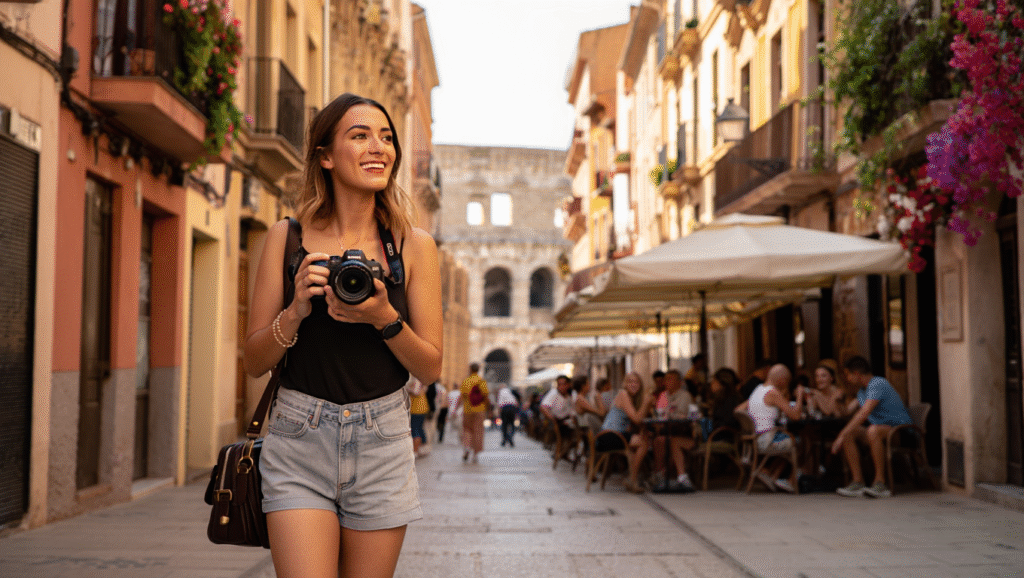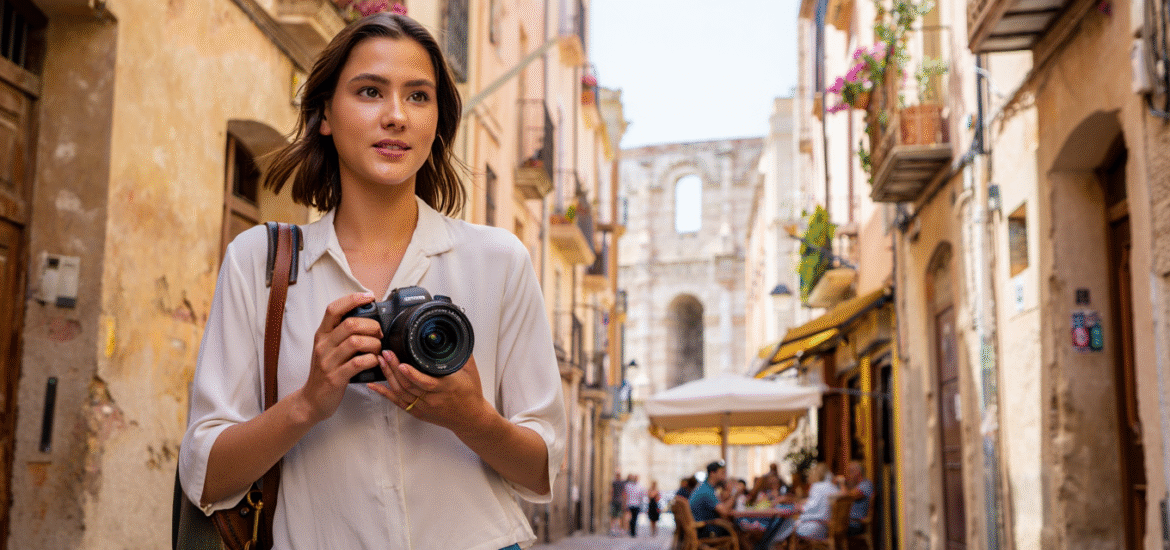City tourism boards everywhere face the same maddening puzzle: how do you capture centuries of culture, thousands of stories, and endless local charm in a format that doesn’t put viewers to sleep? Traditional tourism videos follow the same tired formula – sweeping drone shots, generic voiceover, happy families walking through landmarks. Tarragona’s tourism office wrestled with this exact challenge until they discovered something that changed everything. Working with specialists like crftvideo.com and other animation studios, they realized that explainer videos could transform how cities tell their stories, turning cultural heritage into engaging narratives that actually hold viewer attention.
The problem runs deeper than boring videos, though. Modern travelers make destination decisions in under 30 seconds of content consumption, according to 2024 research from the European Travel Commission. They’re scrolling through dozens of potential destinations, comparing experiences across social media platforms, and frankly, most tourism content blends together into an indistinguishable mess of sunshine and smiling faces. Tarragona needed something different – a way to communicate its unique Roman heritage, vibrant festival culture, and Mediterranean authenticity without falling into the same visual clichés that plague every other coastal Spanish city.
Animation emerged as the unexpected solution because it allows cities to show rather than tell their cultural stories. Instead of explaining that Tarragona hosts spectacular human tower competitions, animated explainer videos can visualize the physics, history, and emotional intensity of castellers building their incredible structures. Rather than describing Roman archaeological sites, animation can transport viewers back 2,000 years to experience the amphitheater as gladiators knew it. This approach transforms passive tourism promotion into active cultural education.
The transformation started when Tarragona’s cultural department recognized that their city possessed stories worth telling in innovative ways. Ancient Roman ruins coexist with medieval architecture, traditional Catalan festivals happen alongside contemporary art installations, and local gastronomy reflects influences from across the Mediterranean. These layers of cultural complexity, however, proved impossible to communicate through standard tourism videos that typically allocate 15 seconds per attraction before moving to the next pretty shot.
When History Meets Modern Storytelling Techniques
Traditional tourism videos treat cultural heritage like a museum display – static, reverential, and ultimately forgettable. Visitors watch these presentations and come away with vague impressions rather than genuine understanding or emotional connection. Tarragona’s cultural assets, particularly its UNESCO World Heritage Roman ruins, suffered from this approach despite their obvious historical significance and visual appeal.
Animation solved this by making history interactive and immediate. The Roman amphitheater sequence in Tarragona’s explainer video doesn’t just show ruins – it rebuilds the structure layer by layer, populates it with animated crowds, and demonstrates how gladiatorial combat actually worked within the space. Viewers experience the amphitheater as a living venue rather than archaeological remains. This temporal bridging creates emotional connections that static presentations simply cannot achieve.
The technical approach involved extensive historical research to ensure animated reconstructions maintained archaeological accuracy while remaining visually compelling. Collaborating with local historians and archaeologists, the animation team developed historically accurate character designs, architectural details, and environmental contexts that transported viewers across centuries. Color palettes reflected historical pigments and materials, while character movements incorporated research about Roman social customs and performance traditions.
Cultural festivals received similar treatment, with animation capturing the kinetic energy and community spirit that photography struggles to convey. The famous Castells tradition – human tower building – became a masterclass in animated storytelling. The sequence shows tower construction from ground level to completion, highlighting individual roles within the team structure while conveying the physical skill, trust, and cultural significance that makes these formations so remarkable. Static images of completed towers pale in comparison to animated sequences that reveal the collaborative choreography involved in their construction.

Breathing Life into Local Character and Authenticity
Every city claims to offer “authentic local culture,” but most tourism marketing presents sanitized versions of local life that feel more like theme park attractions than genuine cultural experiences. Tarragona faced this credibility gap – how do you showcase real local culture without staging it or oversimplifying complex social traditions that evolved over generations?
Animation provided an unexpected solution by allowing deeper exploration of cultural practices without intruding on actual community events. The explainer video’s market scene doesn’t just show vendors selling produce; it illustrates the social networks, seasonal rhythms, and family traditions that make local markets cultural institutions rather than simple commercial spaces. Animated characters represent composite portraits of real vendors, incorporating authentic details about their products, family histories, and connections to regional agriculture.
The gastronomy segment particularly benefited from animated treatment. Rather than typical food shots that look identical across Mediterranean destinations, animation allowed storytelling about ingredient origins, preparation traditions, and cultural significance of specific dishes. The romesco sauce sequence traces tomatoes and peppers from local gardens through traditional preparation methods, showing how geography, climate, and cultural exchange shaped this distinctly Tarragonian creation.
Local festivals beyond the famous Castells also gained new life through animation. The Santa Tecla celebrations, often overshadowed by more internationally known Spanish festivals, received detailed animated treatment that explained the historical origins, symbolic elements, and community participation that make these events culturally significant rather than mere tourist spectacles. Animation allowed viewers to understand the festival’s religious roots, see how traditional costumes evolved over centuries, and appreciate the volunteer efforts that keep these traditions alive.
Measuring Cultural Connection Through Digital Engagement
Quantifying the success of cultural storytelling through animation requires metrics that extend beyond traditional tourism marketing measurements. Tarragona’s experience provided valuable data about how animated explainer videos affect cultural perception and travel decision-making processes. Engagement depth became more important than simple view counts, with average viewing completion rates reaching 78% compared to 23% for traditional tourism videos.
| Metric | Traditional Video | Animated Explainer | Improvement |
| Average Completion Rate | 23% | 78% | +239% |
| Social Media Shares | 180 per month | 850 per month | +372% |
| Cultural Site Inquiries | 45 per week | 165 per week | +267% |
| Multi-day Visit Bookings | 12% | 34% | +183% |
| Repeat Visitor Rate | 8% | 19% | +137% |
The most significant improvement appeared in visitor behavior patterns. Tourists who discovered Tarragona through animated explainer videos spent an average of 2.3 additional days in the city compared to those from traditional marketing channels. They also showed 60% higher participation rates in cultural activities and 45% greater spending on local cultural experiences rather than generic tourist services.
Comments and feedback revealed that animated presentations created emotional investment in Tarragona’s cultural narrative before visitors even arrived. Many travelers mentioned feeling like they “already knew the city’s story” and arrived with specific cultural sites and experiences on their must-see lists. This pre-arrival cultural education translated into more meaningful visits and higher satisfaction rates.
The success influenced other Spanish cities to explore similar approaches, with animation studios reporting 280% increases in cultural tourism video requests throughout 2024. Tourism boards across the Mediterranean began recognizing that animated storytelling could differentiate their destinations in an increasingly crowded marketplace where traditional promotional videos had lost their effectiveness.
From Concept to Cultural Ambassador
Creating effective cultural explainer videos requires understanding that animation serves as a cultural ambassador rather than simple promotional tool. Tarragona’s approach involved extensive community consultation to ensure animated representations respected local perspectives and avoided cultural appropriation or oversimplification. Local cultural groups participated in script development, character design, and historical accuracy verification.
The production process became a cultural preservation project in itself. Elderly residents shared stories and traditions that hadn’t been formally documented, while local artisans demonstrated techniques that informed animated sequences. This collaborative approach ensured that the final video represented authentic local voices rather than external interpretations of Tarragonian culture.
Technical execution required balancing cultural accuracy with visual appeal. The animation style needed to feel contemporary enough to engage modern audiences while respecting the historical and cultural gravitas of the subject matter. Color palettes drew from local architectural elements and natural landscapes, while character designs reflected regional physical characteristics and traditional clothing without resorting to stereotypes.
Voice acting presented particular challenges, with the need to convey local accents and linguistic patterns while maintaining clarity for international audiences. The solution involved using local voice talent for Catalan sequences with subtitles, while English narration maintained neutral pronunciation that didn’t favor any particular nationality. This approach reinforced cultural authenticity while ensuring accessibility.
Start developing your own cultural storytelling approach through animation. Whether representing a neighborhood, business, or cultural organization, animated explainer videos can transform how audiences connect with your unique story and cultural values.
